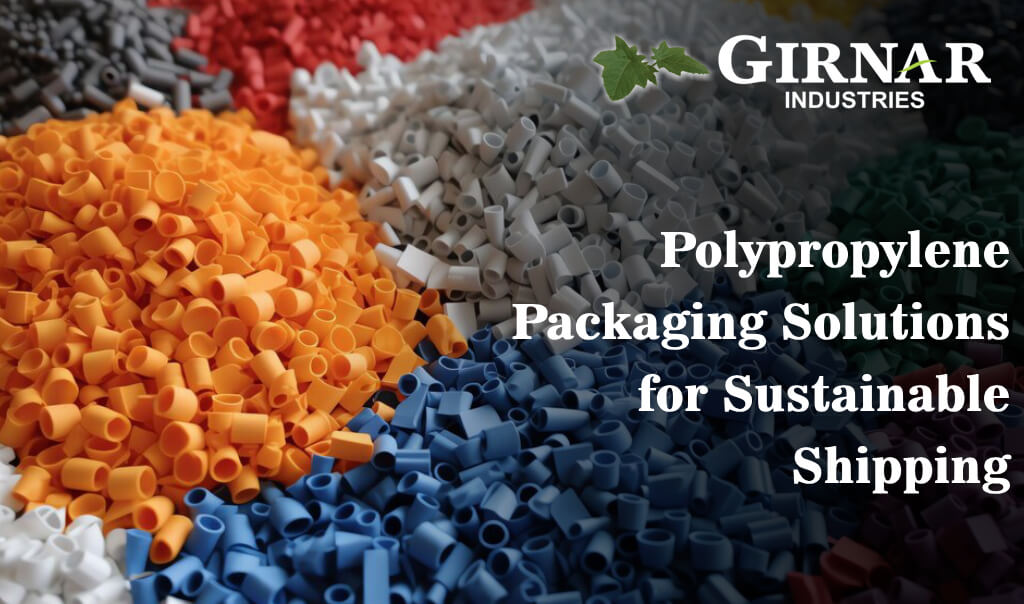In the ever-changing global commerce market, the need for sustainable and eco-friendly packaging solutions has never been greater. As organizations attempt to reduce their environmental impact, the choice of packaging materials is critical to attaining these sustainability goals. Polypropylene, a flexible and widely used polymer, has emerged as a leader in developing new packaging solutions that strike a balance between utility, durability, and environmental responsibility.
The Rise of Polypropylene in Packaging
Polypropylene, or PP, is a thermoplastic polymer that is widely used in a variety of sectors, including packaging. Its popularity can be defined by its unique set of qualities, which make it suited for a wide range of applications. It is lightweight, robust, and resistant to moisture, chemicals, and abrasion, making it an excellent packing material.
In recent years, the packaging sector has seen a paradigm change towards sustainability, promoted by consumer awareness and governmental actions. It is rising to the occasion, providing environmentally friendly alternatives to traditional packaging materials. Polypropylene, unlike single-use plastics that pollute the environment, may be recycled and reused, in line with the circular economy principles.
Polypropylene and Sustainable Shipping
The shipping and logistics industry must balance the necessity for strong packaging to safeguard goods during transit with the imperative to reduce the environmental effect of packaging materials. Polypropylene emerges as a game changer in this circumstance, offering packaging options that meet the shipping industry’s performance and sustainability standards.
Lightweight and Fuel-Efficient
One of the primary benefits of polypropylene packaging in terms of sustainable shipping is its lightweight design. It is much lighter than previous packing materials. This lightweight feature correlates to cheaper transportation costs and increased fuel efficiency in shipping, resulting in a reduction in carbon emissions.
For more blogs:- pvc pipe usage, benefits of cold pressed groundnut oil
Recyclability and Reusability
It is highly recyclable, and the recycling process uses less energy than certain other polymers. This recyclability ensures that polypropylene packaging may be collected, processed, and turned into new products while reducing its environmental impact. Furthermore, polypropylene’s durability allows the packaging to be reused, extending its life cycle and minimizing the requirement for continual material manufacture.
Resistant to Environmental Factors
Polypropylene’s natural adaptability to moisture and chemicals makes it a great material for shipping products. Unlike certain traditional packing materials, which degrade or become degraded in unfavorable environmental conditions, polypropylene remains intact. This resilience not only guarantees that items are transported safely but also helps to reduce packaging waste caused by broken or ineffective packing.
Innovations in Packaging
As the demand for sustainable packaging solutions grows, manufacturers spend on R&D to improve polypropylene’s eco-friendliness. Polypropylene packaging innovations are opening the way for more sustainable shipping methods.
Bio-based Polypropylene
Researchers are researching the usage of bio-based polypropylene made from renewable resources like plants or biomass. Bio-based polypropylene maintains the benefits of regular polypropylene while minimizing dependency on fossil fuels. This approach is consistent with the overall goal of developing packaging materials with a smaller carbon footprint.
Advanced Recycling Technologies
Polypropylene may now be more efficiently recovered and reused because of advances in recycling technologies. It is being recycled using techniques such as chemical recycling and mechanical recycling to ensure that its quality is maintained across several cycles. These improvements support the circular economy by reducing the environmental impact of packaging materials.
Conclusion
Polypropylene packaging options are proven to be a game changer in the race for environmentally friendly shipping procedures. From lowering transportation costs to reducing environmental impact, It provides a comprehensive approach to packaging that corresponds with the aims of businesses and the global community. As companies prioritize sustainability, the increasing use of polypropylene packaging signals a future in which shipping is both efficient and environmentally responsible. Companies that use polypropylene help to create a circular economy and a greener, more sustainable shipping landscape.
FAQ’S
What is polypropylene used for in packaging?
Polypropylene is a versatile thermoplastic polymer widely used in packaging due to its durability and sustainability. In packaging, polypropylene serves various purposes, providing strength, flexibility, and moisture resistance. It is commonly used in the production of bags, films, and containers for shipping. Its lightweight nature contributes to reduced transportation emissions, aligning with sustainable shipping practices.
Why is PP good for food packaging?
Polypropylene (PP) is an excellent choice for food packaging due to its inherent qualities. PP is resistant to moisture, grease, and chemicals, providing a protective barrier against external elements. Its high melting point ensures safe use in microwaves and dishwashers. Furthermore, PP packaging is durable, preserving the freshness and integrity of food products.
Which is stronger PP or PE?
Polypropylene (PP) is generally stronger than polyethylene (PE) in terms of tensile strength and stiffness. PP has a higher melting point, making it more resilient to heat, and exhibits better resistance to chemicals. These characteristics contribute to PP's durability, making it a robust choice for packaging solutions, particularly in the context of sustainable shipping.
Which is stronger plastic or polyethylene?
Polyethylene (PE) is a type of plastic, so the comparison is between different types of materials. Generally, polyethylene is a type of plastic that exhibits varying degrees of strength depending on its specific form, such as high-density polyethylene (HDPE) or low-density polyethylene (LDPE). While some plastics may have specific strengths, it's essential to note that strength varies across different types of plastics.
What are the two types of polypropylene?
Polypropylene (PP) exists in two primary forms: isotactic and syndiotactic. Isotactic polypropylene is the more common type, characterized by a regular and symmetrical arrangement of its polymer chains, resulting in a high melting point and strong crystalline structure. On the other hand, syndiotactic polypropylene features a more irregular arrangement of polymer chains, offering different properties.


